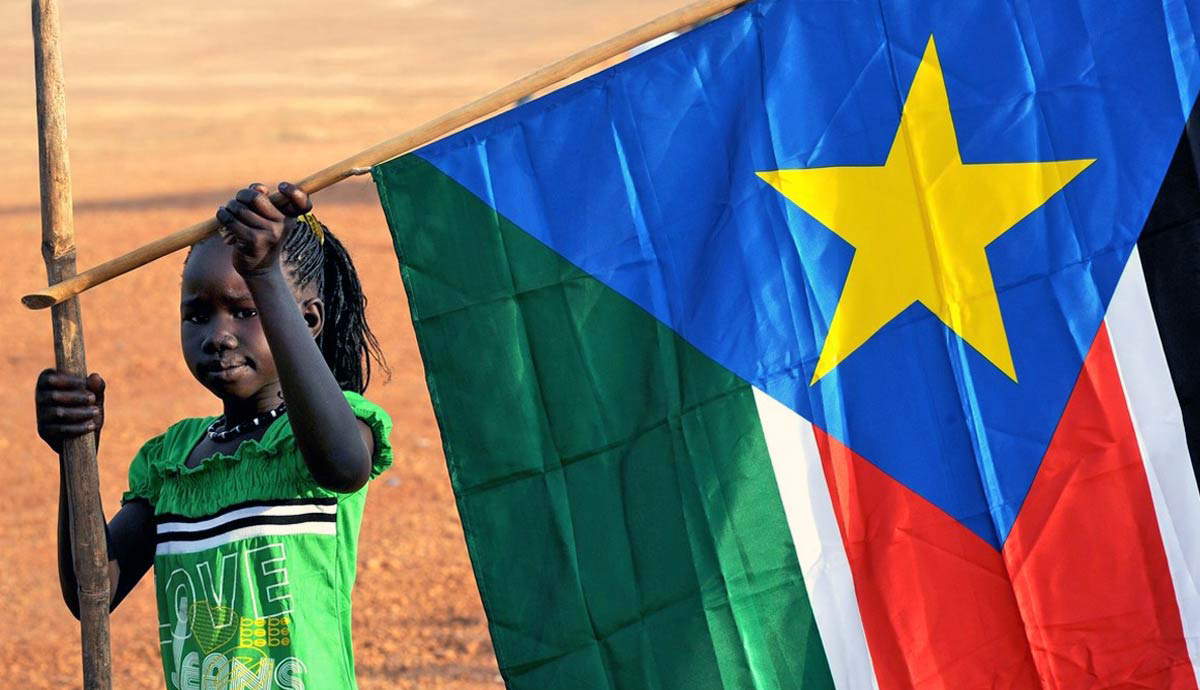
Despite its diminutive size on the all-too-common world maps that use Mercator projection, Africa is the second-largest continent, second only to Asia (or Eurasia). It covers 11.7 million square miles (30.3 million square kilometers) and is home to almost 1.5 billion people, which represents 18% of the global total.
With a rapidly urbanizing population, the African continent has produced some of the world’s largest cities, both in terms of population and actual size.
Here are 8 of the continent’s biggest cities by urban population.
1. Kinshasa: “Kin La Belle”

Formerly Léopoldville, part of the Belgian Congo, the name Kinshasa was adopted in 1966. It is now the capital of the Democratic Republic of the Congo (DRC) and the biggest city in Africa by urban population. It was founded in 1881 by Henry Morton Stanley and served as the capital of the Belgian Congo from the 1920s.
With over 17 million people, it is also the world’s largest Francophone city and one of the world’s largest cities in terms of total urban area. The metric of “city proper” covers an area of 3,848 square miles (9,965 square kilometers) and is the largest city outside of China, ranking 12th in the world.
Kinshasa sits on the southern bank of the Congo River and faces Brazzaville on the north bank, the capital of the Republic of Congo. Rising out of the thick African rainforests, Kinshasa is a hot city that lies just 298.54 miles (480.46 kilometers) south of the equator.

As the capital of the DRC, Kinshasa is the center of the country’s political life. It is home to many important buildings, industries, and facilities, such as the Palais du Peuple, the home of the DRC government.
Other important places include the National Museum of the Democratic Republic of the Congo, which houses the country’s collections of the cultural history of numerous ethnic groups, and Lola ya Bonobo, the world’s only sanctuary for orphaned bonobos.
Officially, the city’s nickname is “Kin la Belle” (Kinshasa the Beautiful), but sectors affected by poor service delivery and neglect refer to the city as “Kin la Poubelle” (Kinshasa the Dustbin).
2. Lagos: A West African Metropolis

With an urban population of over 16 million people, Lagos is the second-biggest city in Africa and the biggest city in Nigeria, Africa’s most populous country.
Sprawling northwards from the coast of the Gulf of Guinea and running along the western edge of the Lagos Lagoon, Lagos is a port city that functions as Nigeria’s economic hub. It served as Nigeria’s capital until 1991, when the seat of governance was moved inland to the city of Abuja.
With its waters rich in fish and with numerous bays and inlets, the area that became Lagos was a populated fishing spot for many centuries before the advent of urbanization. The city that sprang up there grew to become a major hub of the slave trade, exploited by the Portuguese who first landed there in 1472.
With the end of the slave trade in the area, Lagos was attacked and came under the control of the British in the latter half of the 19th century. In 1960, Nigeria was granted independence.
Today, Lagos is a metropolis filled with culture, art, fashion, entertainment, bustling commerce, and many other things that make it a modern, multi-faceted city.
3. Cairo: A City of Contrasts

Cairo is a city with a long and storied history. However, by Egyptian standards, the city is relatively young – only one thousand years old!
It was founded in 969 CE by Jawhar al-Siqilli of the Fatimid Dynasty, and throughout the centuries that followed, it became the main urban center in Egypt. At the center of a major trade network that brought Europe, Asia, and Africa together, Cairo became prosperous as a political, cultural, and economic capital.
With all its differing influences, Cairo is a city of huge contrasts, mixing West with East and the old with the new. Built on the site of ancient capitals, many areas of Cairo serve as windows to the ancient past, whether housed in museums or standing as landmarks visible from the busy streets.
Architectural monuments from ancient and Roman to medieval and Ottoman dot the cityscape, while modern highrise buildings and minarets form the skyline of this enduring city, filled with wonders, from spice-filled marketplaces to five-star resorts.
4. Giza: The Home of the Pyramids

The name “Giza” is more commonly associated with the Great Pyramids, but Giza is also a city. Giza City spans the western bank of the Nile opposite Cairo.
A 2021 census put Giza’s population at 9,250,000, making it the fourth-largest city in Africa. Connected to Cairo via bridges over the Nile, the two cities together make up the biggest urban agglomeration in Africa.
Famous for its historical landmarks, the City of Giza is home to the Great Pyramids, the Sphinx, and all their surrounding structures. However, these are not all Giza has to offer. The city is a tourist mecca and caters to a wide variety of associated industries. The waterfront along the Nile is particularly popular, being home to casinos, resorts, and beautiful parks.
The city is also home to Africa and the Middle East’s oldest zoo. Established in 1891, the Giza Zoo spans 80 acres and is home to a vast array of endemic fauna and flora.
5. Luanda: Angola’s Economic Hub

Overlooking the Atlantic Ocean to its west, Luanda sits on the northern coastline of Angola and serves as the country’s capital and largest city. It was founded in 1576 by the Portuguese, who used it as a base of operations for their colony of Angola. Like many ports on the west coast of Africa, Luanda served as a major hub for the slave trade. It was an important departure point for slaves being taken to Brazil – Portugal’s colony on the other side of the Atlantic.
Angola was granted independence in 1975, and most Portuguese people left the city. As a result of the power vacuum, a struggle for power descended into a civil war that engulfed neighboring regions and drew in the South African army as well as the Cubans who fought to decide the fate of Angola.

As a result, Luanda’s population swelled as refugees fled the countryside to the cities, looking for safety. Ultimately, the South Africans, who were trying to stop the spread of communism, were defeated, and Luanda became the seat of a socialist government.
Today, Luanda is home to more than 9 million people, almost a third of Angola’s entire population. The city serves as the country’s administrative center and largest port. It houses the offices of many important industries, including large oil companies that exploit Angola’s huge natural reserves.
Like all modern cities, Luanda has its fair share of contrasts, from high-end, luxury villas and the picturesque waterfront to sprawling slums.
6. Dar es Salaam: “Abode of Peace”

With over 7.5 million residents, Dar es Salaam is the biggest city and the financial hub of the East African nation of Tanzania. Its name comes from Arabic and means “abode/house of peace.” Throughout the centuries, the city has lived up to its name. Conflicts have mostly steered clear of this city, and it has been relatively free from ethnic tension.
Dar es Salaam is located several hundred miles south of the equator and is a hot and humid city that was founded in 1862 upon the site of the village of Mzizima on the coast. It remained a small port until the Germans took control of what would become Tanganyika (The former name of Tanzania before it was merged with Zanzibar) and established a strong presence there, turning Dar es Salaam into the capital of their colonial protectorate of German East Africa.
After the Second World War, the city underwent massive modernization through the end of the colonial era and into the present day.

Dar es Salaam has become a true melting pot and is home to people from 120 ethnicities, including the Chagga, the Maasai, the Swahili, and the Sukuma. Today, the city represents an eclectic mix of these cultural influences. It includes the colonial architecture from both the Germans and the British, the latter inheriting the colony after Germany’s defeat in the First World War.
The city of Dodoma is officially Tanzania’s capital, but Dar es Salaam handles most of the government’s administration. It is also a springboard to the rest of East Africa, as Dar es Salaam serves as an entry point for trade with inland cities and landlocked countries in the interior.
It has vibrant culinary, movie, arts, and culture scenes and is a hugely popular destination for tourists from all over the world.
7. Khartoum: An Enduring Desert City

Located at the confluence of the White Nile and the Blue Nile, Khartoum is the capital of Sudan and has a population of over 6 million.
The settlement was established in 1821 as an outpost for the Egyptian military, which ruled over Sudan at the time. Given its favorable geographical position, the settlement grew quickly to be a significant center of trade, with enslaved people being one of the primary commodities.
The city has seen its fair share of tragedies and crises. In the late 19th century, it was the scene of a bloody massacre when British and Egyptian forces were besieged by the army of Mahdi Muhammad Ahmad, who led a religious war against Anglo-Egyptian rule. Several years later, the Battle of Omdurman near the city would see the British take revenge, slaughtering thousands and putting an end to the Mahdist rebellion.

In the 1970s and 1980s, the city was a destination for many people fleeing conflicts in neighboring countries despite Sudan being in a civil war of its own. Since then, Khartoum has endured political upheaval in the form of protests, displacement, and massacres.
Since April 2023, Khartoum has been a central part of a brutal civil war that has engulfed the country. Nevertheless, life in Khartoum continues, and the people there are hopeful that more peaceful and happier times lie ahead.
Khartoum is a city of resilience in the face of despair and a testament to the enduring spirit of its residents.
8. Johannesburg: “Place of Gold”

Johannesburg is the biggest city in South Africa and the country’s economic hub. Founded in 1886 as a mining settlement after the discovery of gold in the Witwatersrand, it quickly grew to become a massive center of enterprise connected to the gold industry.
Gold mining dominated the economy for decades, and Johannesburg grew to become the biggest city in South Africa and the wealthiest on the continent. With a foundation of gold mining as its economic base, Johannesburg expanded as other businesses took hold. By the end of the 1980s, South Africa’s focus on gold mining began to shift to other sectors as the economy sought more diversification, yet Johannesburg was, by this time, already established as an economic powerhouse.
The collapse of apartheid and the opening of South African investment opportunities laid the groundwork for international businesses to invest in the country. Johannesburg served as the perfect place for corporations to build their African headquarters.
Despite the prosperity, Johannesburg is a product of colonialism and apartheid, both of which have left their marks on society. The divisions between the rich and the poor are clear. While parts of the city are lush and filled with opulent mansions, much of the city is also characterized by dusty slums.
Johannesburg’s population has swelled to more than 6 million people over the course of its short life and continues its speedy growth as one of Africa’s fastest-developing cities.

Africa is a growing continent. Having shaken off the shackles of colonialism, its huge cities are progressing towards a future of hope. These cities are integral to the vision of a prosperous Africa, turning around negative stereotypes and creating spaces where people can thrive in the socio-economic and cultural spheres.










